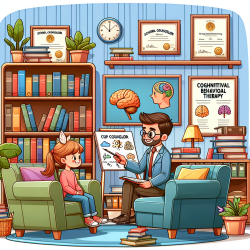As a Special Education Director, the feeling of being lost amidst therapist staffing shortages is all too familiar. Ensuring that every student receives the support they need is a daunting task, particularly when faced with a scarcity of qualified therapists. The challenges are numerous, but embracing technology offers a beacon of hope and a pathway to effective solutions.
Technology has revolutionized many sectors, and education is no exception. The advent of online therapy services, such as those provided by TinyEYE, has created new opportunities to bridge the gap between the demand for specialized services and the availability of qualified professionals. Here are some ways technology can alleviate the pressure of staffing shortages and enhance the quality of special education services:
- Accessibility and Flexibility: Online therapy services offer unparalleled accessibility. Students can receive therapy sessions regardless of their location, ensuring that rural or underserved areas are no longer at a disadvantage. Additionally, the flexibility of scheduling online sessions allows for more efficient use of therapists' time.
- Consistency and Continuity: With online therapy, students can maintain consistent therapy sessions even when there are changes in local staffing. This continuity is crucial for the progress and well-being of students requiring ongoing support.
- Resource Optimization: Utilizing online platforms allows schools to optimize their resources. By integrating online therapy into their existing programs, schools can make the most of their budget while still providing high-quality services.
- Enhanced Collaboration: Online platforms often come with tools that facilitate better collaboration between therapists, teachers, and parents. This holistic approach ensures that everyone involved in a student’s education is on the same page and working towards common goals.
- Data-Driven Insights: Many online therapy services offer data tracking and reporting features. These tools provide valuable insights into student progress, helping educators make informed decisions and tailor interventions more effectively.
Despite the undeniable benefits, the transition to incorporating technology in special education can be challenging. Here are some strategies to ease the transition and maximize the benefits of online therapy services:
- Professional Development: Invest in training for staff to ensure they are comfortable and proficient with the technology. This will help them to better support students and make the most of the available tools.
- Engage Stakeholders: Involve parents, teachers, and therapists in the transition process. Clear communication and collaboration are key to ensuring everyone understands the benefits and is on board with the new approach.
- Monitor and Evaluate: Regularly assess the effectiveness of the online therapy services. Collect feedback from students, parents, and therapists to make continuous improvements and address any concerns promptly.
In conclusion, while the feeling of being lost amidst therapist staffing shortages is valid, it is important to recognize that technology offers a viable and effective solution. By embracing online therapy services, schools can ensure that all students receive the support they need, regardless of geographical or logistical challenges. As a Special Education Director, leading the charge in adopting these innovative solutions can inspire your team and ultimately transform the educational experience for your students.
Let’s harness the power of technology to provide every student with the opportunities they deserve.










